Automatic lubrication systems, commonly known as auto-lube systems, automatically apply lubricant such as oil or grease to machinery components at regular intervals while the equipment is running. These systems are used to provide continuous lubrication to bearings, gears, chains, and other moving parts that would normally require frequent manual greasing by maintenance personnel.
The purpose of auto-lube systems is to consistently deliver precise amounts of lubricant on an ongoing basis to prevent friction and component wear. This helps improve equipment reliability and longevity while reducing unexpected downtime. Auto-lube systems eliminate the need to stop production for manual re-lubrication and also reduce the risk of missed lubrication schedules or over-greasing.
Key benefits of auto-lube systems include:
- Maximising equipment efficiency by keeping components properly lubricated
- Reducing labour costs associated with manual lubrication
- Preventing premature wear and tear through consistent lubrication
- Minimising lubricant waste and environmental contamination
- Improving worker safety by reducing direct contact with hazardous greases
- Allowing for lubrication while equipment is running
- Monitoring and adjusting lubricant amounts for each lubrication point
Overall, auto-lube systems are an important method for optimising lubrication practices in industrial facilities. Their automated operation ensures proper lubrication for enhanced equipment protection and performance.
Types of Food Grade Lubricants
When selecting a lubricant for food manufacturing equipment, it's crucial to choose one that meets food safety standards. The most common designations for food-grade lubricants are:
- NSF H1 (Lubricants) - Can be used on food processing equipment and all machine parts when there is a risk of incidental contact with food.
- NSF 3H (Release agents) - For use on hard surfaces in contact with meat and poultry to prevent food from adhering during processing. Also to be used on products containing edible oils.
- NSF K2 (Solvent cleaners) - The highest category for cleaners within the food production area and due to total evaporation cuts out the need for washing or wiping after use.
- NSF A1 (General cleaners) - Acceptable for use as general cleaners on all surfaces in and around food processing areas, where the use is not intended for direct food contact. Must be washed down.
Common types of food-grade lubricants include:
- Greases - Thick oils containing thickeners. Used to lubricate bearings, gears, chains, etc. Withstand water and contamination. Require re-lubrication.
- Oils - Formulated for circulation systems like hydraulics, compressors, gearboxes. Flow readily and transfer heat. Require filtration and oil changes.
- Specialty Products - Penetrating oils to loosen parts, silicone sprays as mould releases, oven chain lubricants. Specific high-temp uses.
Choosing the right NSF certification and lubricant type helps prevent contamination while meeting equipment reliability needs.
Importance of Food Grade Lubricants
The use of food grade lubricants is crucial for food and beverage processing facilities to ensure compliance with food safety regulations and prevent contamination that could lead to costly product recalls or damage to a brand's reputation.
Food grade lubricants that meet NSF International's certification standards are formulated from ingredients determined to be safe for incidental food contact. This is important because lubricants can potentially migrate onto food contact surfaces or mix with the product stream.
Using non-food grade lubricants that contain toxic additives or other hazardous substances poses a contamination risk if they leak, drip, or get picked up by moving parts.
Food producers are legally responsible for ensuring that anything that contacts food is clean and safe. Lubricants play a critical role in upholding this duty and preventing health hazards, as well as avoiding expensive recalls or regulatory enforcement actions if a contamination were to occur.
By utilising food grade lubricants in equipment auto-lube systems, manufacturers demonstrate compliance with the BRC Global Standard. This provides assurance to consumers that best practices are in place to deliver safe, quality products.
Choosing the Right Food Grade Lubricant
Choosing the optimal food grade lubricant for your auto-lube system requires careful consideration of several factors:
- Load and speed:The load on the equipment and the operating speeds will impact the thickness and viscosity needed. Under heavy loads or slow speeds, a thicker grease is required. For high speeds or lighter loads, a thinner oil may be preferred.
- Temperature range: The minimum and maximum temperatures during operation must be taken into account. Some lubricants are formulated for wide temperature ranges, while others are specific to cold or hot environments.
- Equipment materials: The metals, seals, and other materials used in the machinery will determine compatibility. Avoid lubricants that could cause corrosion or deterioration.
- Environment: Dust, humidity, washdowns, and other conditions must be evaluated. Certain additives make lubricants more resistant to contaminants.
- Regulations: Verify the lubricant meets all necessary approvals for food contact and purity standards. NSF H1 is common for incidental contact.
Consulting directly with reputable lubricant manufacturers is highly recommended when selecting a food grade lubricant. Their expertise can ensure you choose the optimal viscosity, additives, and formulation for your specific equipment and application. Many offer on-site assessments to measure wear patterns and suggest the best lubrication plan. Following their recommendations helps maximise equipment life and reliability while ensuring food safety.
Auto-Lube System Components
Auto-lube systems consist of various components that work together to automatically apply lubricant when and where it is needed. Some key components include:
- Pumps and Meters - These dispense and regulate the flow of lubricant. For greases, common options are piston, progressive cavity, and peristaltic pumps. For oils, gear pumps or piston pumps are often used along with flow meters to monitor the dispensing rate.
- Hoses and Reels - Flexible hoses run from the pump to the lubrication point. Hose reels keep them neatly coiled and prevent kinks. Hoses should be compatible with the lubricant and suitable for the operating pressure.
- Lubrication Carts - Mobile carts with onboard pumps and reservoirs can service multiple lube points quickly and easily. They reduce cross-contamination risk compared to hand-held grease guns.
- Bulk Storage Tanks - Larger centralised reservoirs that feed the distribution system. Often used for oil-based systems. Should have adequate filtration and be constructed of compatible materials.
- Filters - Critical for removing contaminants and ensuring lubricant cleanliness. Filters may be located at bulk storage tanks, on pumps, inline, or at point-of-use. Proper filtration rating and maintenance is essential.
- Controllers - Provide automated operation of pumps, timers, monitors, and alarms. Advanced controllers track lube usage and can integrate with plant monitoring systems.
- Accessories - Items like swivels, metering valves, injectors, tubing, fittings, and mounting hardware complete the system. Careful selection ensures optimal performance.
Proper selection and installation of quality auto-lube components results in effective, reliable lubrication for food production machinery.
Benefits of Automatic Lubrication Systems
Automatic lubrication systems provide numerous benefits compared to manual lubrication methods. By delivering lubricant in small, precise amounts on a consistent basis, auto-lube systems optimise equipment protection and reliability.
- Precise, consistent lubrication - Auto-lube systems provide regular lubricant flow in the exact amounts needed. This prevents under or over-lubrication, enhancing equipment protection.
- Improved equipment reliability - The constant lubrication from auto-lube systems reduces wear, friction, and corrosion. This maximises the service life and performance of machinery.
- Reduced labour costs - There is no need to manually lubricate each point, saving substantial labour. Less downtime is required for lubrication, enhancing productivity.
- Cleaner operations - Auto-lube systems prevent oil leakage and spillage from manual lubrication. This results in a cleaner production environment.
- Enhanced safety - Automated lubrication reduces worker exposure to hazardous points around moving equipment. The risk of slip and fall incidents is also decreased.
- Environmental benefits - Precise lubricant application optimises consumption, reducing waste. The systems prevent accidental spills and leaks into the surrounding areas.
Overall, implementing auto-lube systems with food-grade lubricants provides a range of benefits for food and beverage plants compared to manual lubrication practices. The automated systems maximise efficiency, reliability, safety, and sustainability.
Implementing an Auto-Lube System
Implementing an effective auto-lube system requires careful planning and preparation. The first step is conducting a lubrication survey to identify all lubrication points and understand the type and frequency of lubricant needed. This helps determine the scope of the system and select appropriate components.
When selecting system components, consider factors like:
- Number and location of lubrication points
- Required lubricant volumes and flow rates
- Environmental conditions (temperature, moisture, contaminants)
- Type of equipment and compatibility of materials
- Ease of installation, operation, and maintenance
Common auto-lube system components include:
- Pumps - to transfer and meter lubricant
- Valves - to control lubricant flow
- Controllers - to activate pumps and monitor system
- Piping - to deliver lubricant to points
- Filters - to remove contaminants
- Reservoirs - to store lubricant
Proper installation is critical for optimal performance. Carefully follow equipment manufacturers' instructions and use compatible fittings and materials. Allow adequate space for components and access. Set up reservoirs and piping to facilitate filling and draining. Program controllers and test system operation.
Thoroughly train maintenance staff on operating, monitoring, and troubleshooting the auto-lube system. Document procedures for inspection, lubricant change-outs, adjustments, and repairs. By taking the time to properly implement the system initially, you can maximise efficiency and reliability for the long term.
Maintenance and Monitoring of Auto-Lube Systems
Regular maintenance and monitoring is crucial to ensure auto-lube systems operate smoothly and reliably. This involves:
- Inspections and Adjustments: Auto-lube systems should be periodically inspected to check for leaks, damaged hoses, loose fittings, clogged filters, and any other issues. The lubricant flow rate may need to be adjusted over time as equipment ages. Technicians should follow the manufacturer's recommendations for inspection frequency.
- Lubricant Levels: The lubricant reservoir should be checked regularly and refilled as needed to avoid running low. Sudden drops in lubricant level may indicate a leak or malfunction. Only use lubricants approved for that specific auto-lube system.
- Troubleshooting Issues: Any error codes, unexpected pressure changes, or odd noises should be promptly investigated and addressed. Common issues include clogged injectors, failing pumps, low battery, electrical shorts, and programming errors. Technicians should troubleshoot problems based on service manuals.
- Preventive Maintenance: In addition to repairs, auto-lube systems need preventive maintenance like changing filters per the schedule, testing backup batteries, cleaning reservoirs, and flushing/replacing old lubricant. This helps avoid breakdowns and extends system lifespan.
Proper maintenance and monitoring ensures the auto-lube system consistently applies the right amount of fresh, clean lubricant for peak equipment protection. Plants should provide sufficient training and resources to technicians responsible for upkeep of these critical food safety systems.
Safety and Hygiene of Auto Lube Systems
Safety and hygiene should be top priorities when implementing auto-lube systems in food production facilities. Proper use of food-grade lubricants and well-designed lube systems can help prevent contamination of food products and ensure compliance with regulations.
The BRC Global Standard has stringent requirements to prevent conditions that could lead to contamination. Auto-lube systems must use only lubricants that meet NSF H1 standards for incidental food contact. The lube system design should avoid any direct contact between lubricants and exposed food.
Lubricant leaks are one of the main contamination risks. Lube lines and fittings should be thoroughly inspected for wear or damage during maintenance. Any leaks detected must be fixed immediately. Proper storage, handling and labelling of lubricants is also critical.
Another key hygiene measure is to keep lube systems clean. Food-grade lubricants can still harbour microbes over time. Regular cleaning of lube lines, pumps and reservoirs helps minimise biofilm buildup. Thorough cleaning should occur before switching lubricant types to avoid cross-contamination.
With careful lube selection, system design, maintenance and cleaning, auto-lube systems can operate hygienically and safely in food plants. This prevents product recalls and supply chain disruptions that could result from lubricant contamination incidents. Compliance and contamination prevention are imperative for consumer safety.









